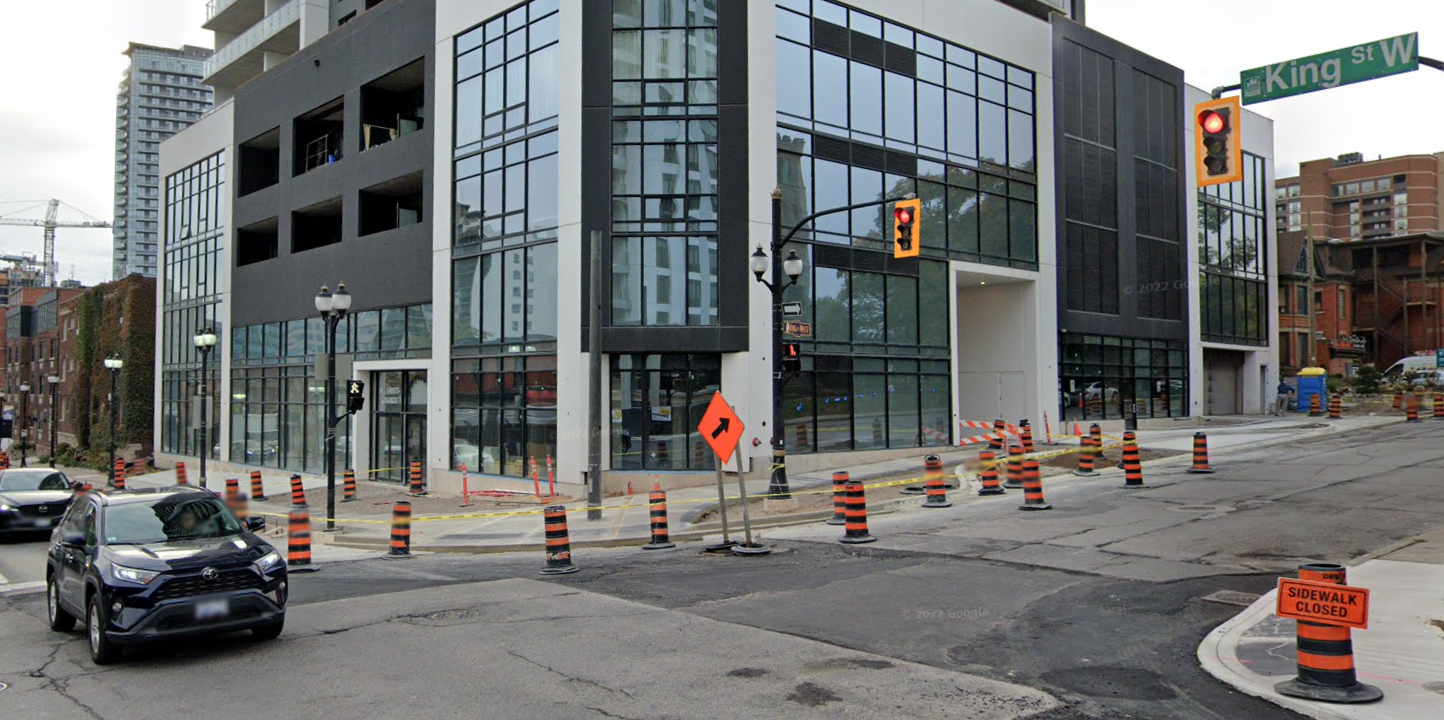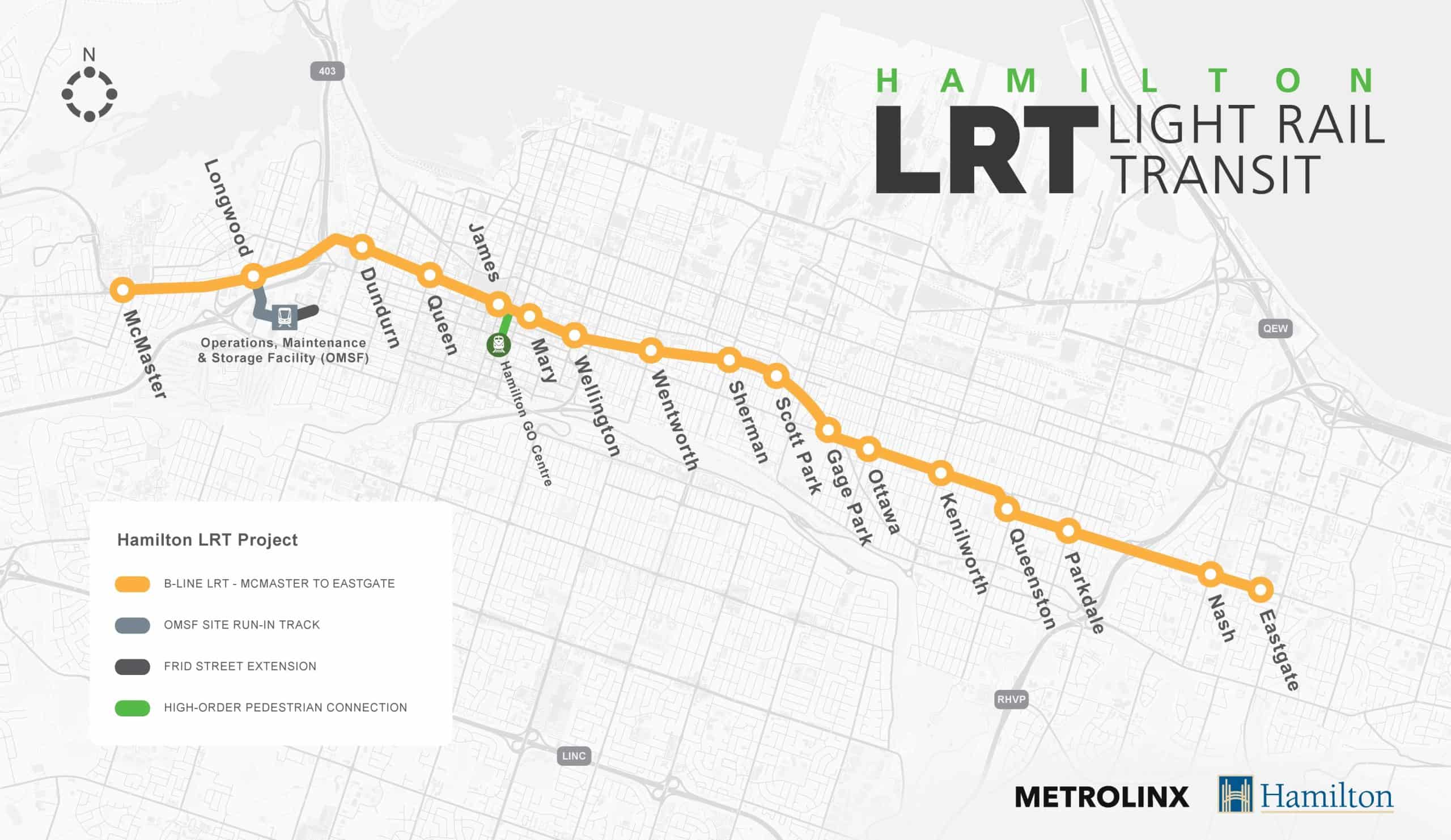Hamilton completes upgrades and 2-way conversion of Queen Street
Published November 22, 2022 at 2:53 pm

Hamilton’s swift switch from one-way to two-way streets continued on Tuesday with the completion of the final phase of the Queen St. South conversion.
The switch began in 2020 when the stretch of Queen between King St. and Herkimer St. was converted to a two-way. With Tuesday’s work, Queen is also a two-way from King to Main St. West.
The scope of work also included:
- Upgrades to the traffic signal at King Street W and Queen Street.
- Curb and Sidewalk Reconstruction
- Pavement Markings and Signage Upgrades
“I am pleased to see the Queen Street two-way conversion completed,” said Mayor Andrea Horwath. “I have heard directly from Hamiltonians that road safety is a major priority, and I will work tirelessly to secure improvements for pedestrians, cyclists and drivers in all communities across our city.”
The conversion of Queen was approved by the city council in 2017 as Hamilton moves towards “complete streets” — improving accessibility for all road users, including pedestrians and cyclists.
Main and King
The city is undergoing a series of road transformations for safety-enhancement purposes and in preparation for the light rail transit (LRT) project. Main and King will be converted into two-way streets; Main —in the name of safety, and King — to better facilitate LRT.
Main and King have been major topics of discussion for the city due to the disproportionate number of collisions and pedestrian deaths on the streets this year.
Lane reduction and reconfiguration work began in the summer on Main, with the addition of pedestrian buffers and bump-outs, as well as a bus-only lane.
Hamilton city council passed a motion last May to convert Main, which had just reached double-digit pedestrian deaths within a few months when Hamilton typically averages around four per year.
Light Rail Transit
The motion also called for a safety assessment of King, which is already facing restructuring due to the implementation of light rail transit (LRT) along the corridor.

According to the council motion, the conversion of the four-lane Main “will enable safer use for all people who need to use the streets, including public transit riders, pedestrians, motorists, and cyclists.”
They were instructed to report back to council in “early 2023” with an implementation plan for the two-way conversion of Main that includes an assessment of costs, construction timing, and resource requirements.
In addition to the lane reconfiguration work, various immediate measures focusing on roadway safety improvements have been implemented along Main and King between Dundurn and Delta:
- Council has approved “No Right Turn on Red” (NRTOR) restrictions, and implementation has been completed on Main.
- Pedestrian “countdown” signals (PCS) installations have begun on Main, with all intersections between Dundurn and Sanford Ave. completed. The remainder of the intersections is expected to be installed by end of August.
- Leading Pedestrian intervals have been added to intersections on Main between Locke St. and Victoria St., with the remainder expected to be installed by end of August.
- Ladder crossings have been implemented at most intersections on Main and King.
- A preliminary design for the pedestrian scramble at Main and Summer’s Lane has been completed. The project will be tendered, and construction is expected to commence in late 2022 or early 2023.
- Implementation of NRTOR restrictions, pedestrian countdown timers and leading pedestrian intervals on King will commence following the work on Main.
- The City has engaged with a consultant, WSP, to develop alternative concepts for evaluation and undertake an assessment of capital improvement costs, construction timing and required approvals.
The project is being funded through the city’s road safety capital budget at a limit of $400,000.
insauga's Editorial Standards and Policies advertising





